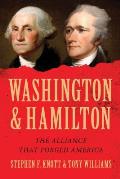The
Statutes and Stories blog has a couple of new posts detailing an archival discovery related to the
New York delegation to the
Constitutional Convention.
The
first article by University of Wisconsin professor John Kaminski, attorney Adam Levinson, and Sergio Villavicencio of the Alexander Hamilton Awareness Society is a bit breathless for my taste, but
the second steps back and raises a lot of thoughtful questions about how to interpret incomplete evidence.
The background of this story is that the state of New York sent three delegates to the Philadelphia Convention of 1787, aimed at revising the
Articles of Confederation. One of those men was a leading proponent of having that meeting,
Alexander Hamilton. You may have heard of him.
The other two were judge
Robert Yates (1738-1801) and his former trainee, attorney
John Lansing, Jr. (1754-1829?), both from Albany. The two men were related by marriage and also allied in politics. Like Gov.
George Clinton, they opposed strengthening the national government. In sum, they went to Philadelphia to outvote Hamilton on the state’s delegation.
Around 30 June, after the convention had met for a little more than a month, Hamilton went home to New York City. He was getting to propose his ideas, but he couldn’t even get his own state to support them.
Yates and Lansing followed about 10 July. They could see that the convention was moving toward creating a constitution for a stronger federal government, and they didn’t want any part in that.
As the blog posts explain, on 20 August Hamilton told his fellow Federalist
Rufus King:
I have written to my colleagues informing them, that if either of them would come down I would accompany him to Philadelphia. So much for the sake of propriety and public opinion.
No one has found Hamilton’s actual letter, so we don’t know how he phrased that offer. As the three authors ask, “Did Yates and Lansing understand Hamilton’s letter to mean that he would
only go back to Philadelphia if one of them joined him?” The comment “So much for the sake of propriety and public opinion” suggests Hamilton wrote to the two men purely as a political move.
In any event, Hamilton did go back to participate in the closing sessions. He couldn’t vote on behalf of New York since that state had required all three of its delegates to be present for votes. But he was talking.
In early September the meeting approved a new draft Constitution for the U.S. of A., totally rebuilding the national government. On 17 September the chairman of what had become a Constitutional Convention,
George Washington, wrote in his diary:
Met in Convention, when the Constitution received the unanimous assent of 11 States and Colonel Hamilton’s from New York.
Washington distinguished between the eleven states that had a quorum of delegates at the convention and the lone voice from New York piping up unofficially. (
Rhode Island wasn’t there at all.) Everyone knew Hamilton didn’t represent his colleagues’ views. Nonetheless, New York didn’t oppose the new document.
Proponents of the new Constitution emphasized that seemingly unanimous vote of the states. Hamilton insisted that every delegate present should sign it.
Gouverneur Morris came up with language to indicate the men were signing as witnesses to the state votes, not to endorse the new document personally. Even so,
Elbridge Gerry,
George Mason, and
Edmund Randolph refused to sign.
The new archival discovery is an expense report from Robert Yates to the government of New York for his service as a delegate, including “May June & July 1787 59 Days at 32s pr Day.” At the bottom of that document is the entry:
To my Comming as far as New York in my Way to Philadelphia for the Same purpose where I heard that the Convention rose [i.e., adjourned] a Day after my arrival and my return home 12 Days at the Same rate
As Kaminski, Levinson, and Villavicencio point out, this record shows Yates was on his way to Philadelphia as the convention was completing its work. Had he arrived in early September, his voice would have canceled out Hamilton’s approval of the Constitution. He could have added to the chorus protesting the document and refusing to sign. He could even have sent for Lansing and turned New York’s vote to a no.
Instead, Yates got as far as New York City, learned the convention was done, and went back home. He and Lansing both argued against ratifying the proposed Constitution at New York’s state convention. Their side lost narrowly, 30 votes to 27.
The Statutes and Stories blog posts discuss other small revelations coming out of these expense records, as well as questions they don’t answer but other documents might. It’s a good example of how even mundane bureaucratic documents can reveal crucial facts.














